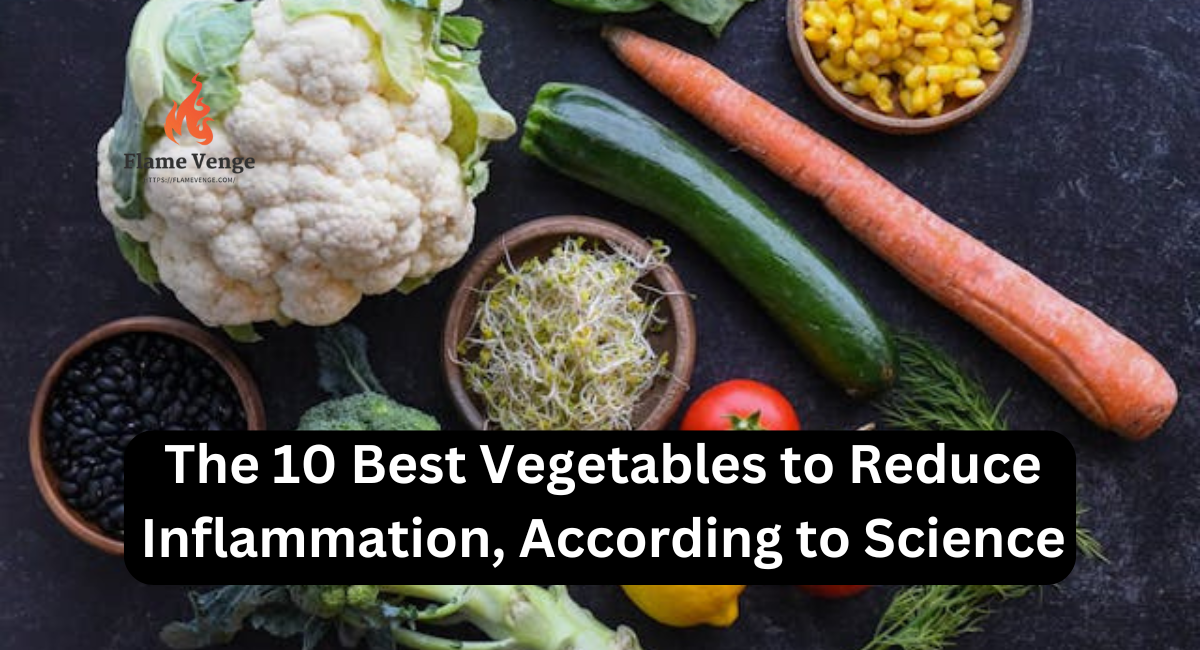When your body gets hurt or sick, it can become inflamed as a way to protect itself. But if this inflammation lasts a long time, It can prompt issues like heart issues, diabetes, and sicknesses that influence the invulnerable framework. Eating foods that fight inflammation, like certain veggies, can help keep it under control.
This article explores the top 10 vegetables scientifically proven to reduce inflammation, promoting overall health and well-being.
1. Broccoli
Why: Broccoli is a cruciferous vegetable rich in antioxidants and anti-inflammatory compounds. It contains sulforaphane, a powerful compound that inhibits the inflammation process at the molecular level.
Science: Research has found that sulforaphane can help decrease signs of inflammation and decrease the chances of developing long-term diseases linked to inflammation.
How to Use: Put broccoli in salads, stir-fries, or cook it by steaming. Broccoli roasted with garlic and olive oil is yummy and good for you.
2. Spinach
Why: Spinach is loaded with vitamins, minerals, and phytochemicals that have anti-inflammatory properties. It is particularly rich in antioxidants like flavonoids and carotenoids, which combat inflammation.
Research indicates that spinach’s high vitamin E and polyphenols levels help reduce inflammatory markers and oxidative stress.
How to Use: Incorporate spinach into smoothies, salads, and soups, or sauté it with garlic and olive oil. Fresh spinach can also be added to sandwiches and wraps.
3. Kale
Why: Kale, another cruciferous vegetable, is packed with antioxidants such as quercetin and kaempferol, known for their anti-inflammatory effects.
Science: Studies have demonstrated that these antioxidants help lower inflammation and prevent oxidative damage to cells.
How to Use: Enjoy kale in salads, smoothies, or as a sautéed side dish. Kale chips make a healthy, crunchy snack. Adding kale to soups and stews can also boost their nutritional content.
4. Bell Peppers
Why: Bell peppers, especially red and yellow varieties, are rich in vitamins A and C and antioxidants like quercetin. These nutrients help reduce inflammation and support immune function.
Research shows that bell peppers’ antioxidants can decrease inflammation markers and oxidative stress.
How to Use: Add bell peppers to salads, stir-fries, and fajitas. They can also be stuffed with grains and legumes for a nutritious meal.
5. Tomatoes
Why: Tomatoes have a lot of lycopene, which is good for you and helps reduce inflammation. They also have vitamins C and E.
Research shows that lycopene can help decrease inflammation and reduce the chances of getting diseases that cause inflammation, like heart disease.
How to Use: Tomatoes can be used in salads, sauces, and soups. Roasted tomatoes add flavor to various dishes. Fresh tomatoes can also be sliced and added to sandwiches and wraps.
6. Carrots
Why: Carrots have a lot of beta-carotene, which is healthy for you.
Science: Research indicates that a diet rich in beta-carotene can lower levels of inflammatory markers in the body.
How to Use: Carrots are a tasty snack or can be added to salads, soups, and stews. They can also be roasted with honey and spices for a delicious side dish.
7. Beets
Why: Beets are rich in betalains, potent anti-inflammatory and antioxidant compounds. They also contain high levels of nitrates that help reduce inflammation.
Science: Studies have shown that the betalains in beets can reduce inflammation and oxidative stress.
How to Use: Add beets to salads, roast them as a side dish, or blend them into smoothies. Beet juice is another way to enjoy its anti-inflammatory benefits.
8. Garlic
Why: Garlic contains sulfur compounds, such as allicin, with strong anti-inflammatory effects. It also boosts the immune system and helps fight infections.
Science: Studies have shown that garlic can help decrease swelling and reduce the chance of getting diseases caused by inflammation.
How to Use: Garlic can be added to sauces, stir-fries, soups, stews, and other dishes. You can spread simmered garlic on bread or blend it into pureed potatoes for an additional taste.
9. Ginger
Why: Ginger is well-known for its anti-inflammatory and antioxidant properties, primarily due to compounds like gingerol and shogaol.
Science: Studies have found that ginger can reduce inflammation and pain, particularly in conditions like osteoarthritis.
How to Use: Add fresh ginger to teas, smoothies, stir-fries, and soups. Ground ginger can be used in baking or to spice up various dishes.
10. Turmeric
Why: Turmeric has curcumin, a vital substance that fights inflammation. People have used it for a long time in traditional medicine to treat inflammation-related conditions.
Science: Numerous studies have shown that curcumin can significantly reduce inflammation and effectively manage inflammatory diseases.
How to Use: Turmeric is used in curries, soups, and stews. It can also be added to smoothies or taken as a supplement for its anti-inflammatory benefits.
Conclusion
Adding these healthy vegetables to your meals can help reduce inflammation and improve your health. They are suitable for you, tasty, and can be used in many different dishes. Eating these vegetables often decreases swelling and reduces the chances of getting long-term illnesses, which can help you live a healthier and more balanced life.
READ ALSO:

